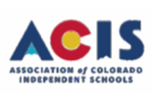
Over the past few days, we have gained perspective on just how unique Iceland is. While a “crust anomaly” known as a magma plume under the island spawns violent volcanoes, it also creates bubbling geysers, naturally-heated saunas, and geothermally powered greenhouses. Cold, insistent wind from the Arctic barrages Icelanders, but it makes the country primed for wind energy. Glaciers transform the landscape and trigger earthquakes as they melt, but they supply runoff to raging rivers, allowing the country to use hydropower, their largest energy source.
On Sunday, we started the morning off with a lecture in geology. After a groggy awakening due to jet lag, Dr. Amy Clifton taught us the basics of Icelandic geology. Iceland is geologically unique in that it sits in the boundary between the North American and Eurasian tectonic plates. They move apart at the same rate your fingernails grow, pushing magma to the surface. We saw it firsthand on the Reykjanes Peninsula later that day, visiting Gunnuhver and Ogmundahraun, a hotspring and lavaflow respectively. Hiking around the mineral pools, we’ve caught a glimpse of Iceland’s vast mineral deposits, a product of Iceland’s intercontinental geography. It has been incredible to see just how much seemingly sluggish geological processes have impacted Iceland: from causing rifts in the landscape to creating bubbling ponds of sulfur, Iceland’s home between two plates has completely shaped the country.
On Monday, we met a few of our Icelandic pen pals. We spent a morning with them at their school, Laugarlækjaskóli. We had much in common, from music tastes to Netflix shows. There were, however, some unexpected differences from CSS. Everyone takes off their shoes before they go into the building, and they spend the whole day in socks, making the environment feel much more casual and cleaner. In class, the students switch between using Icelandic and English in rapid succession, making conversations only half-clear. Most importantly (and most wonderfully), they break for porridge for twenty minutes every morning after the first class. Having spent the last four years wolfing down snacks in our five-minute passing period at CSS, I think we should bring this innovation back with us.
With our new vinar (friends), we drove to the outskirts of Reykjavik to visit Hellisheidavirkjun, a geothermal power plant. From a single 2000 m deep borehole, the plant can power 300,000 homes – more than three times the energy Iceland’s people need. However, most of their electricity goes to one of Iceland’s biggest industries, aluminum smelting.

Follow all of the student ECS Blogs on Campus News.




